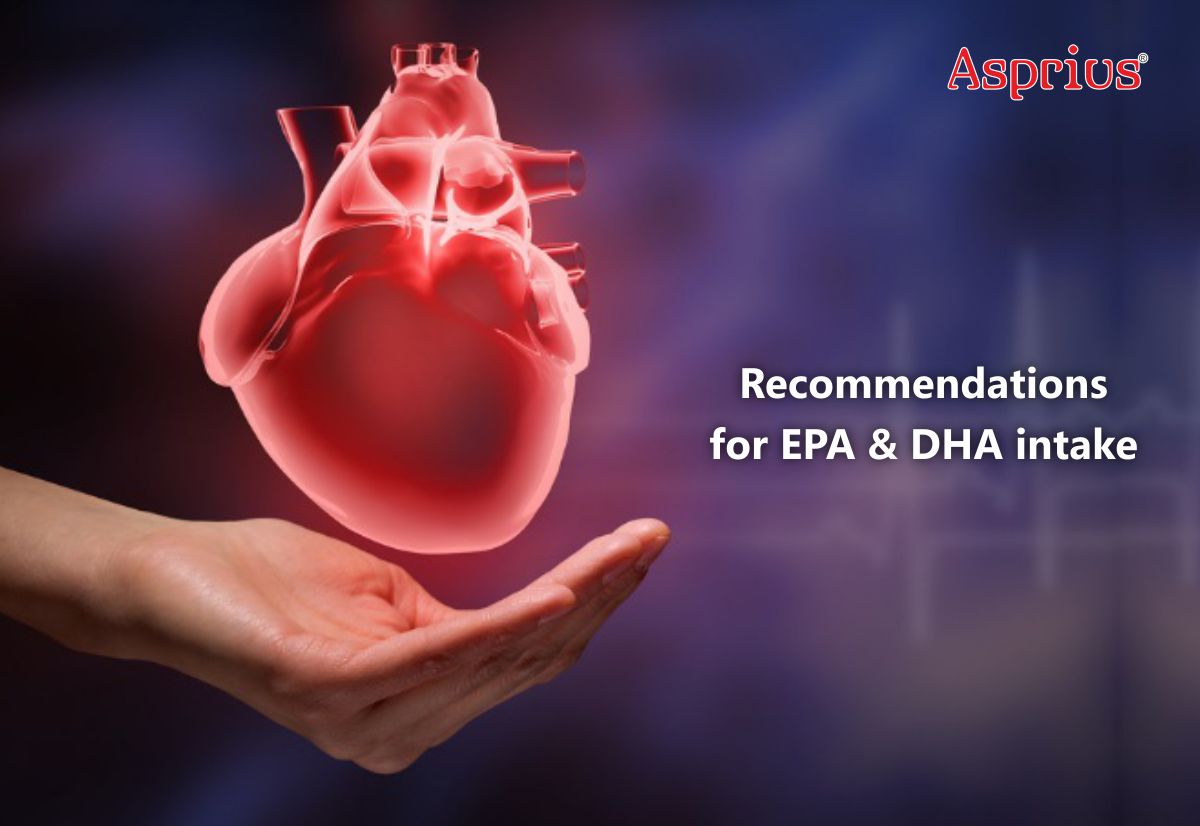
Dr. Sanjay Agrawal
Leading Pharmaceutical consultant and editor-in chief of IJMToday

Omega 3 Fatty Acid approved as GRAS by USFDA
- The American Dietetic Association recommends an average of 500 mg of total EPA and DHA per day. This would be approximated by having two 4-ounce (after cooking) servings of fatty fish per week.
- The American Heart Association recommends two servings of fish per week, preferably fatty fish.
- The World Health Organization recommends one to two servings of fish per week, with each serving providing between 200 and 500 mg of total EPA and DHA.
- The NIH (National Institutes of Health) working group recommends 220 mg each of EPA and DHA per day in a 2000-calorie diet.
There are also some specific recommendations for target population:
- The Child Health Foundation recommends that pregnant and lactating women should receive an average of at least 200 mg per day of DHA.
History of Dietary Recommendation in India
The history of dietary recommendations in India began at a much later date. In the Cantor Lectures in 1936, McCarrison, the founder director of the National Institute of Nutrition, Hyderabad, India referred to the differences in the qualities of diets from various parts of India. Most nutrition-related research in India dealt with the problems of malnourishment and lack of availability of the basic nutrients. In the surveys conducted by the Director General of the Indian Medical Services in the 1930s and 1940s it was mentioned that only 39 per cent of the population were well nourished, while 41 per cent were ‘poorly nourished’ and 20 per cent were ‘very poorly nourished’
After independence, several indigenous measures were taken to improve the nutritional status of the populace, and while the green revolution went a long way in reducing malnutrition, it had a number of deleterious outcomes. The main negative feature of this programme was the focus on only two crops – rice and wheat at the expense of nutritionally important accompanying crops such as pulses and millets.
The role of fats in the diet was never a part of nutrition debates in India, until the 1980s and 1990s, when the initial dietary guidelines and Recommended Dietary Allowances (RDA) were published, for implementation on a national level. At this point, it was clear that the dietary patterns of Indians were vastly different from a typical ‘Western’ diet, with relatively high intakes of CHO and low intakes of fat. In the first RDA report, a minimum intake of total fat of 15%E was recommended to ensure adequate consumption of calories, essential FAs and fat-soluble vitamins. Based on the FAO/WHO (1977) recommendations, the upper limit was set at 30%E, which was increased to 35%E in the 2010 publication of the Indian RDA.
Recommendations for individual FAs were generally based on the minimum requirement to prevent deficiencies. Since SFA and MUFA can be synthesized in the body, no RDA was specifically mentioned for these. The requirement of LA, one of the essential FAs was based on a minimum of 3%E required to prevent deficiency. While the rationale behind setting the minimum requirement for ALNA was not clear, the AMDR for LA and ALNA was set as 2.5-9.0%E and 0.5-2%E, respectively. In addition, the recommendations also included the daily consumption of at least 200 mg n-3 PUFA. This was based on the US Dietary Guidelines Advisory Committee (USDGAC) recommendations, which in turn, was based on average intakes of marine fish in the USA. The upper limit for TFA intake was based on global recommendations of <1%E.
In both the RDA reports, it was cautioned that in large parts of India, the major thrust ought to be to increase fat intakes since the major issue at hand was that of low intakes of total fat and n-3 PUFA. However, this word of caution appears to have been lost in the general risk reduction clamour against the intake of fats. Therefore, the general emphasis in India, for all the population, continues to be on a relatively low-fat diet, with examples of a typical healthy diet comprising 20-25%E fat and 60-68%E from CHO.




